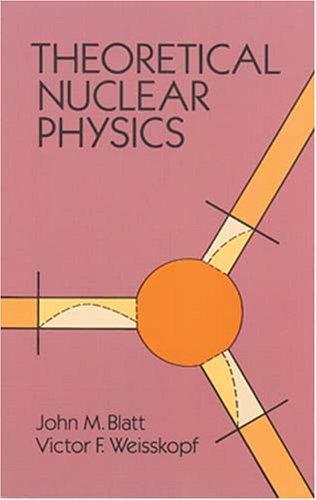
Theoretical Nuclear Physics
by John M. Blatt, Victor F. Weisskopf
Publisher: Wiley 1952
ISBN/ASIN: 0486668274
Number of pages: 864
Description:
An uncommonly clear and cogent investigation and correlation of key aspects of theoretical nuclear physics by leading experts: the nucleus, nuclear forces, nuclear spectroscopy, two-, three- and four-body problems, nuclear reactions, beta-decay and nuclear shell structure. Directed to the experimental physicist working in nuclear physics or graduate students who know the essential concepts and problems.
Download or read it online for free here:
Read online
(online reading)
Similar books
 Careers in Atomic Energy
Careers in Atomic Energyby Loyce McIlhenny - US Atomic Energy Commission
Nuclear energy is playing a vital role in the life of every man today. It is essential that all Americans gain an understanding of this vital force if they are to realize fully the myriad benefits that nuclear energy offers them.
(7320 views)
 Marie Curie and the Science of Radioactivity
Marie Curie and the Science of Radioactivityby Naomi Pasachoff - American Institute of Physics
Marie Curie opened up the science of radioactivity. She is best known as the discoverer of polonium and radium and as the first person to win two Nobel prizes. Her radium was a key to a change in our understanding of matter and energy.
(16045 views)
 An Introduction to the Interacting Boson Model of the Atomic Nucleus
An Introduction to the Interacting Boson Model of the Atomic Nucleusby Walter Pfeifer - arXiv
This work introduces into the Interacting Boson Model, created in 1974 and then extended by numerous papers. Many-body configurations with s- and d-boson states are described and creation- and annihilation-operators for bosons are introduced.
(11224 views)
 Nuclear and Particle Physics
Nuclear and Particle Physicsby Niels Walet - UMIST
In these lecture notes the author shall discuss nuclear and particle physics on a somewhat phenomenological level. The mathematical sophistication shall be rather limited, with an emphasis on the physics and on symmetry aspects.
(16223 views)